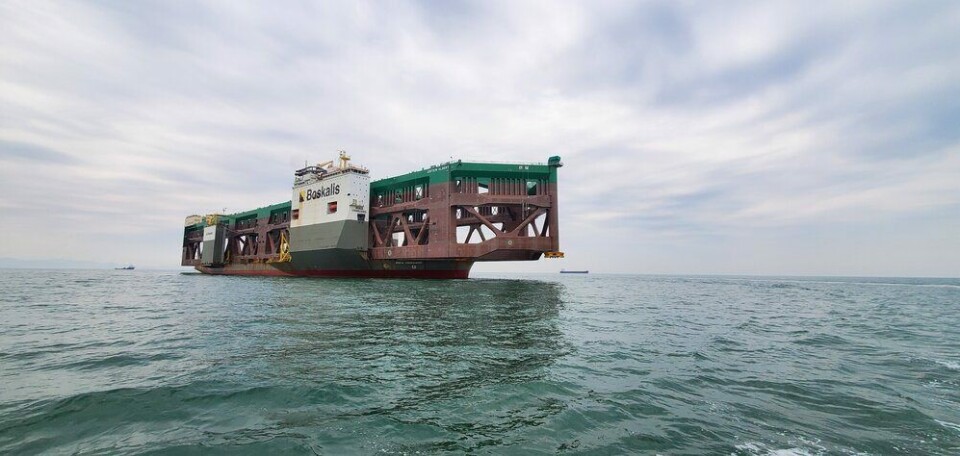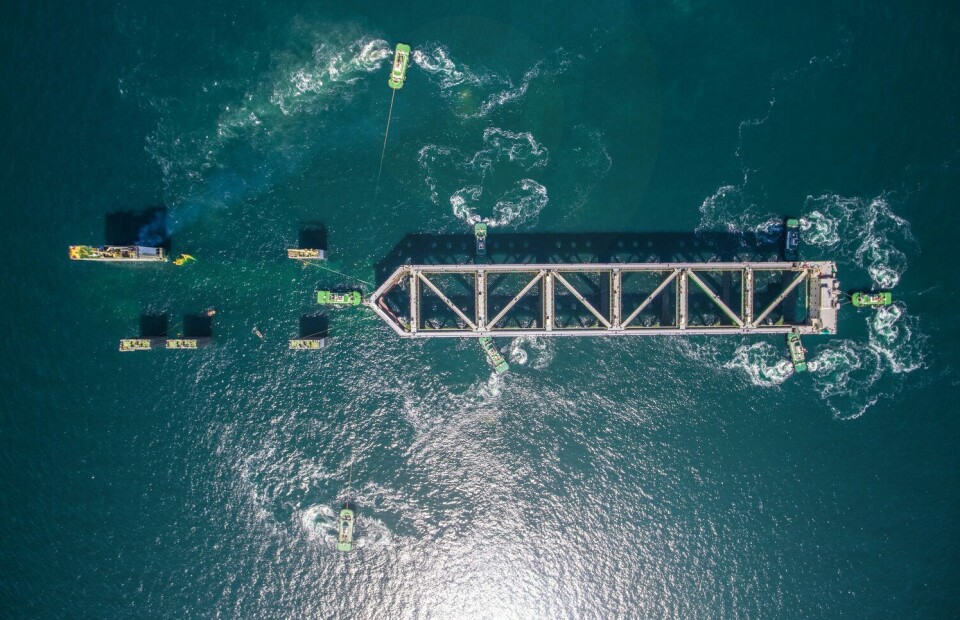
Havfarm comes ‘home’ to Norway tomorrow
A revolutionary salmon farm, the Havfarm, will arrive in the north of Norway tomorrow after a journey of almost two months from a Chinese shipyard.
The Havfarm, a 385-metre long ship-shaped floating frame that can hold 10,000 tonnes of fish in six 47 x 47 metre nets, has been ordered by Norwegian salmon farmer Nordlaks.
“The heart jumps a little every time we get updates on how close the Havfarm is to coming home. Only three Nordlaks employees have seen Havfarm as finished as it is now, so we have many who are now excited to see Havfarm with their own eyes,” said Havfarm project manager Bjarne Johansen in a press release.

7km power cable
Preparations for the arrival of the Havfarm, named the Jostein Albert, have included the laying of a 7km power cable from land to the Ytre Hadseløya site in Hadselfjord, Vesterålen.
In the first two weeks after arrival, work will take place to anchor the Havfarm and connect it to shore power. Although the Havfarm is now arriving in Hadsel municipality, some work remains to be done before completion, the company said.
Due to the Covid-19 pandemic, there were delays at the shipyard in China which caused some of the work to be postponed until after arrival in Norway. So, when the Havfarm is anchored up, Nordlaks together with a number of suppliers will begin the work that remains.
A hectic period
“It will be a hectic period, so unfortunately it will not be possible for anyone other than the crew and the suppliers to board,” said Nordlaks communications manager Lars Fredrik Martinussen.
“Of course, we think this is sad, because we know that there is great interest in the project, and we want to show off the Havfarm. However, we must first prioritise completion and commissioning. Eventually we will be able to give people a better insight into what it looks like at the Havfarm itself and how we work out there.”

The heavy cargo vessel BOKA Vanguard that has carried the Havfarm from China is due to sail into the Hadselfjorden at around 08:00 CET tomorrow, and will temporarily stop in the area outside Lekang. This is not the final location.
Water under the keel
“During Monday or Tuesday, the fastenings which have kept the Havfarm on the cargo vessel on the two-month journey from China to Norway are removed,” said Trond Haakstad, from Sea Systems AS, who is responsible for the work on unloading, towing and anchoring on location.
“We also lower the BOKA Vanguard into the sea so that Jostein Albert gets water under the ‘keel’ and floats off the cargo vessel. Then BOKA Vanguard finishes its mission.”
When the Jostein Albert is safely discharged, it is towed from Lekang to a final location off Ytre Hadseløya.
Four offshore anchor handling vessels and three tugboats have been hired by Nordlaks to carry out the operation.
11 moorings
“Towing will take less than a day, and will be carried out by four of the tugs involved. It is their job to keep the Havfarm in place while it is attached to the moorings at the location,” Haakstad explained.
The Havfarm has a fastening point for the moorings on its “bow” which it can rotate around freely, and the chains that are ready on the seabed are pulled in through this point. There are two remote controlled underwater craft (ROVs) with arms and camera, used to pick up the anchor chains and to verify that everything is going as it should.
When all 11 moorings are installed, all that remains is to attach the Jostein Albert to the shore power cable. This is done in the same way as the moorings, with ROVs. Overall, the work outside Ytre Hadseløya will last for a week.
When the installation on site has been completed by Haakstad and his crew, Nordlaks together with a number of suppliers will embark on the work that remains to be completed and finally stock the Havfarm with salmon.
“The plan is for us to have fish in the ocean farm in September, so now it will be a hectic period with many suppliers and a lot of personnel working on board to make sure everything is clear,” said project manager Johansen.






















































